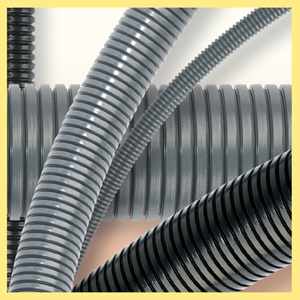Are You Using LSF or LSHF Cables On Site? If Yes, you need to read this blog post on LSHF Flexible Conduits...

If the answer to the above question is YES, then you should consider protecting those cables with an LSHF Flexible Conduit.
The move to LSF/LSHF/LS0H cables has come about due to demand for safety in public areas, such as hospitals, schools, train stations and on public transport. The risk of poisonous fumes and thick black smoke can be a greater risk to lives than that of fire alone.
LSF - LSHF - LS0H - What Are The Differences?
LSF stands for Low Smoke Fumes - in regard to control, signal and data cables, LSF cables and conduits are made from a modified version of PVC.
These LSF cables/conduits can still give off large and dangerous amounts of thick black smoke along with hydrogen chloride gas when burned.
Black smoke can obscure emergency exits and hydrogen chloride can be deadly to people who come into contact with it.
LSHF stands for Low Smoke Halogen Free, while LS0H stands for Low Smoke Zero Halogen. When these cables or conduits are exposed to fire, they emit no more than 0.5% hydrogen chloride.
A Contradiction In The Regulations?
Clause 527 of the National Wiring Rules deals with selection and erection of wiring systems to minimise the spread of fire. This encompasses conduits/trunkings.
Cables must comply with I.S 201 and conduits/trunkings must comply with EN 50086-1 for conduits or EN 50085-1 for trunkings.
Nothing in the regulations states that LSHF or LS0H conduits MUST be used in public buildings or where LSF/LSHF cables are being installed.
Surely it doesn't make sense that halogen free cables are required but these cables could be 'protected' in a standard and potentially deadly conduit.
With this in mind, Demesne Electrical are the 1st electrical distributor in Ireland to import a complete range of Low Smoke Halogen Free Flexible Conduit and Glands to suit.
If you would like to discuss Low Smoke Halgogen Free Flexible Conduits in more detail please hit the button below and we will get back to you.

